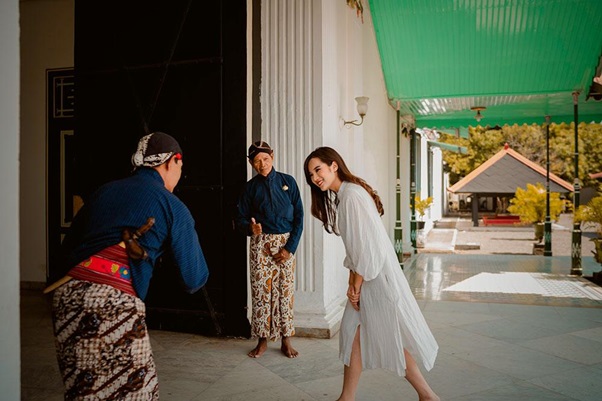Yogyakarta is a city in Indonesia that is famous for having a variety of unique cultures. One of them is the traditional clothes used by the people of Yogyakarta. In addition to being used daily, traditional clothing is often worn when holding certain american national parks map events such as state gatherings, weddings, welcoming big days, and other important events. If you are interested in the types of traditional clothing in Yogyakarta, check out the reviews by reading the information below.
- Surjan
The most common traditional clothing found in Yogyakarta is Surjan. Surjan is araditional Yogyakarta clothing intended for men. The people of Yogyakarta themselves often call this clothing by the name of Takwa clothing. This clothing is usually used in a series of Grebeg ceremonies, which are routine celebrations that Javanese people usually hold to commemorate big days.
Surjan has various motifs, but the ones that are used quite often usually have brown and black stripes. One of the characteristics of this traditional dress is the six buttons on the neck and two buttons on the chest. These clothes are usually combined with the typical Jarik cloth of Yogyakarta and accessories in a headgear known as Blangkon.
- Jarik
Jarik is one type of cloth that is quite suitable, especially in the area of Java. Each region usually has various types of motifs that are quite interesting and different from one another. Jarik cloth itself is often used for various purposes or events.
This type of fabric can be worn either by women or men as subordinates. Some of the motifs that are quite popular are the Sidomukti, Sidomulyo, and Sekar Jagad motifs. The uniqueness of the motif of the cloth makes it popular with many people, and the people of the country often collect it.
- Baju Kesatrian Ageng
Baju Kesatrian Ageng is a traditional attire that is commonly used in the palace environment. This outfit is usually used by tumenggung and dukes for important palace events. The hallmark of this traditional clothing is the Kuluk Kanigara, also known as Kuluk Do not Menir, a black head covering that is stiff in shape with large size.
Meanwhile, the clothes are made of black velvet cloth with golden ornaments. At the same time, the women’s clothing itself is almost the same as the clothes used by men, which are made of velvet.
- Sikep Alit
This traditional dress is usually used by courtiers, namely the workers in the palace. These clothes are worn when holding important events such as meetings or dinners held by the palace.
The top of the garment is generally dark blue with buttons made of metal such as brass or copper. While the bottom itself usually uses Jarik with a Sawita motif. This traditional clothing is also equipped with accessories in blangkon and kris, which are tucked in the back of the right.

- Langeran
Sikep Alit is a garment that is also commonly used by courtiers, namely Langeran. This outfit is usually worn for important meeting ceremonies or at dinner at the palace. Langeran’s base material is usually white linen with a stand collar. Some of them even complete it with a bow tie.
Langeran is usually combined with Jarik cloth with a typical Jogja motif and various supporting accessories such as bow ties and kris. This look is complemented by using black slippers as footwear. While for the head, usually use a Blangkon head cover.
- Velvet Kebaya
Kebaya Velvet is a traditional dress that Yogyakarta women usually wear. Velvet fabric is usually quite thick. These traditional clothes are generally black and decorated with gold ornaments. Velvet kebaya is usually combined with Jarik cloth as a subordinate.
The motifs used are usually Sidomukti or Sidomulyo, which are typical Yogyakarta motifs. As a complement to their appearance, Yogyakarta women usually style their hair in a bun by adding a mountain-shaped bun. In addition, additional accessories that are commonly used are three-tiered necklaces and endless bracelets.
Before you plan a trip to Yogyakarta, be sure to read more about Yogyakarta and Indonesia by visiting Wonderful Indonesia.


